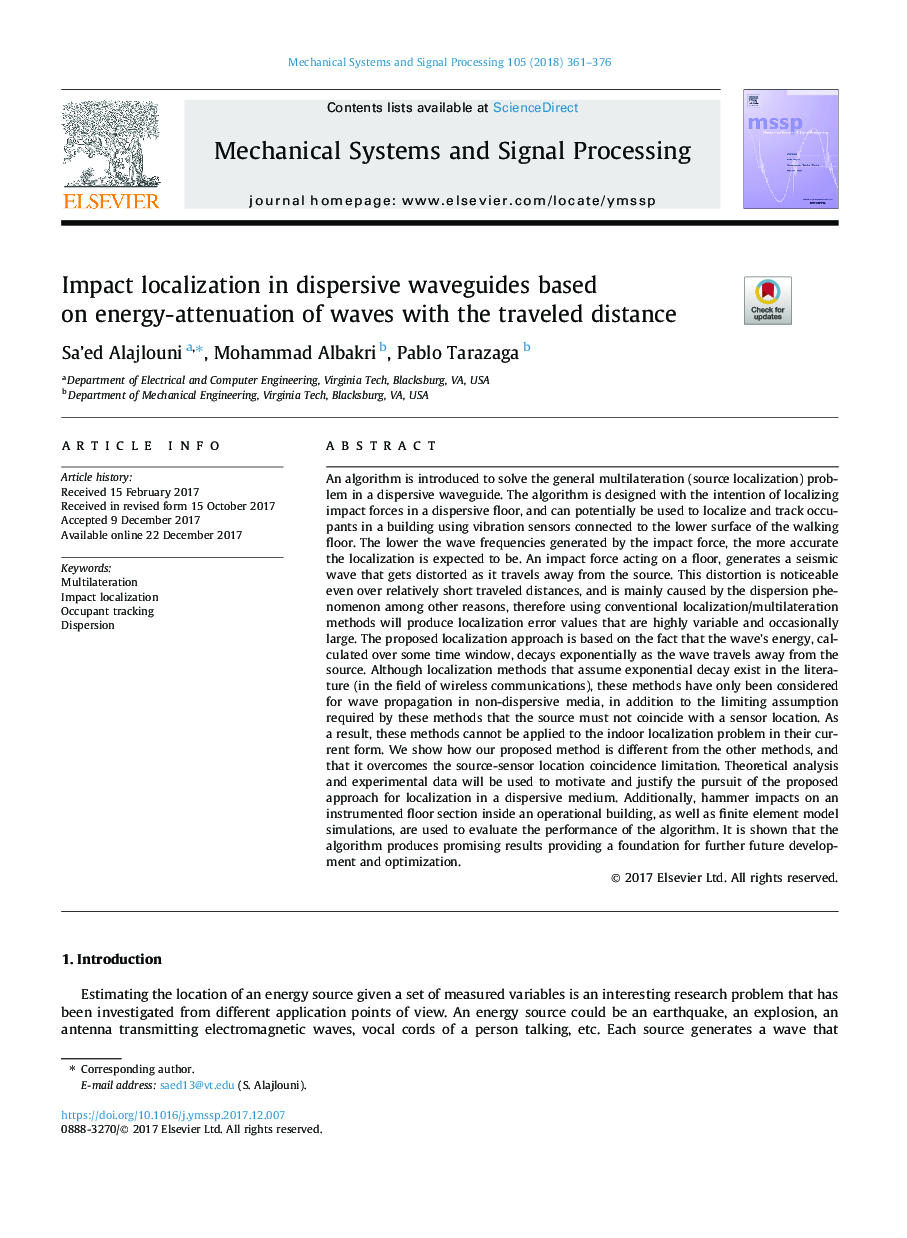| Article ID | Journal | Published Year | Pages | File Type |
|---|---|---|---|---|
| 6954445 | Mechanical Systems and Signal Processing | 2018 | 16 Pages |
Abstract
An algorithm is introduced to solve the general multilateration (source localization) problem in a dispersive waveguide. The algorithm is designed with the intention of localizing impact forces in a dispersive floor, and can potentially be used to localize and track occupants in a building using vibration sensors connected to the lower surface of the walking floor. The lower the wave frequencies generated by the impact force, the more accurate the localization is expected to be. An impact force acting on a floor, generates a seismic wave that gets distorted as it travels away from the source. This distortion is noticeable even over relatively short traveled distances, and is mainly caused by the dispersion phenomenon among other reasons, therefore using conventional localization/multilateration methods will produce localization error values that are highly variable and occasionally large. The proposed localization approach is based on the fact that the wave's energy, calculated over some time window, decays exponentially as the wave travels away from the source. Although localization methods that assume exponential decay exist in the literature (in the field of wireless communications), these methods have only been considered for wave propagation in non-dispersive media, in addition to the limiting assumption required by these methods that the source must not coincide with a sensor location. As a result, these methods cannot be applied to the indoor localization problem in their current form. We show how our proposed method is different from the other methods, and that it overcomes the source-sensor location coincidence limitation. Theoretical analysis and experimental data will be used to motivate and justify the pursuit of the proposed approach for localization in a dispersive medium. Additionally, hammer impacts on an instrumented floor section inside an operational building, as well as finite element model simulations, are used to evaluate the performance of the algorithm. It is shown that the algorithm produces promising results providing a foundation for further future development and optimization.
Related Topics
Physical Sciences and Engineering
Computer Science
Signal Processing
Authors
Sa'ed Alajlouni, Mohammad Albakri, Pablo Tarazaga,
